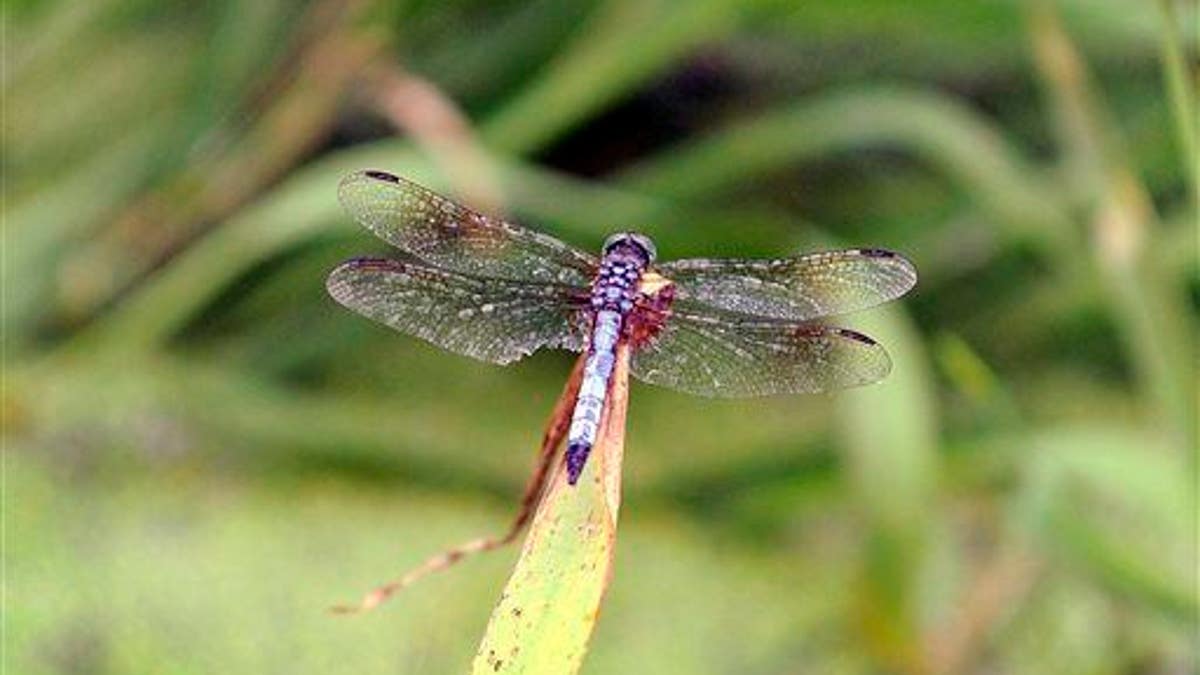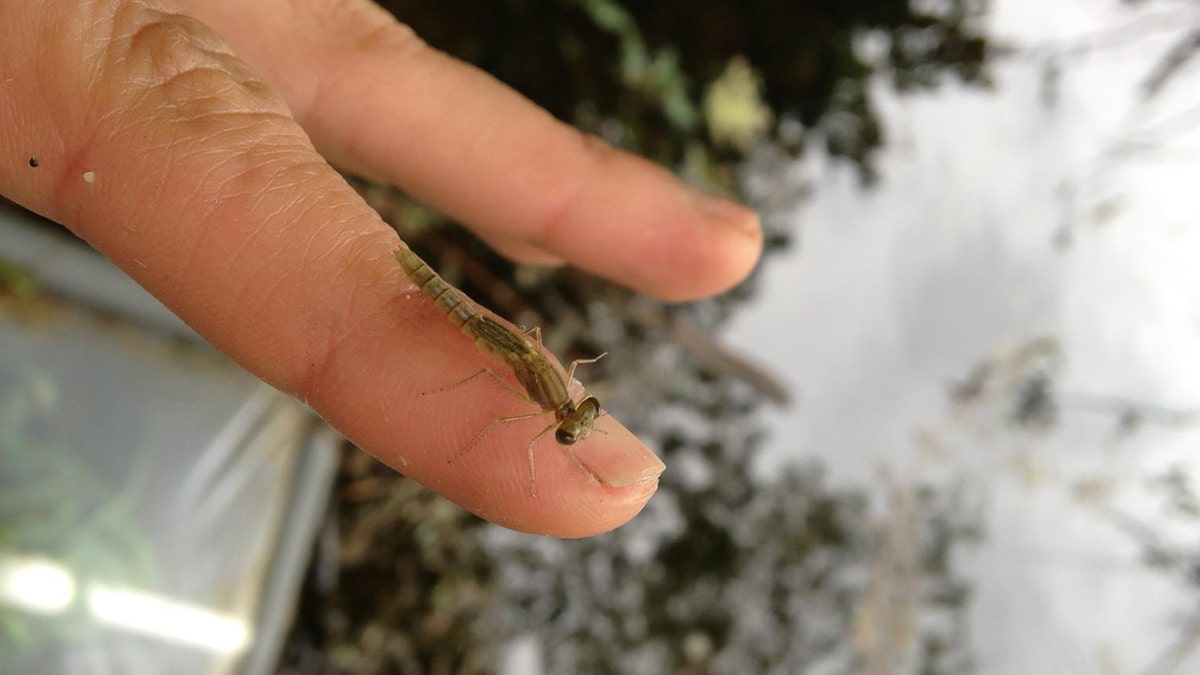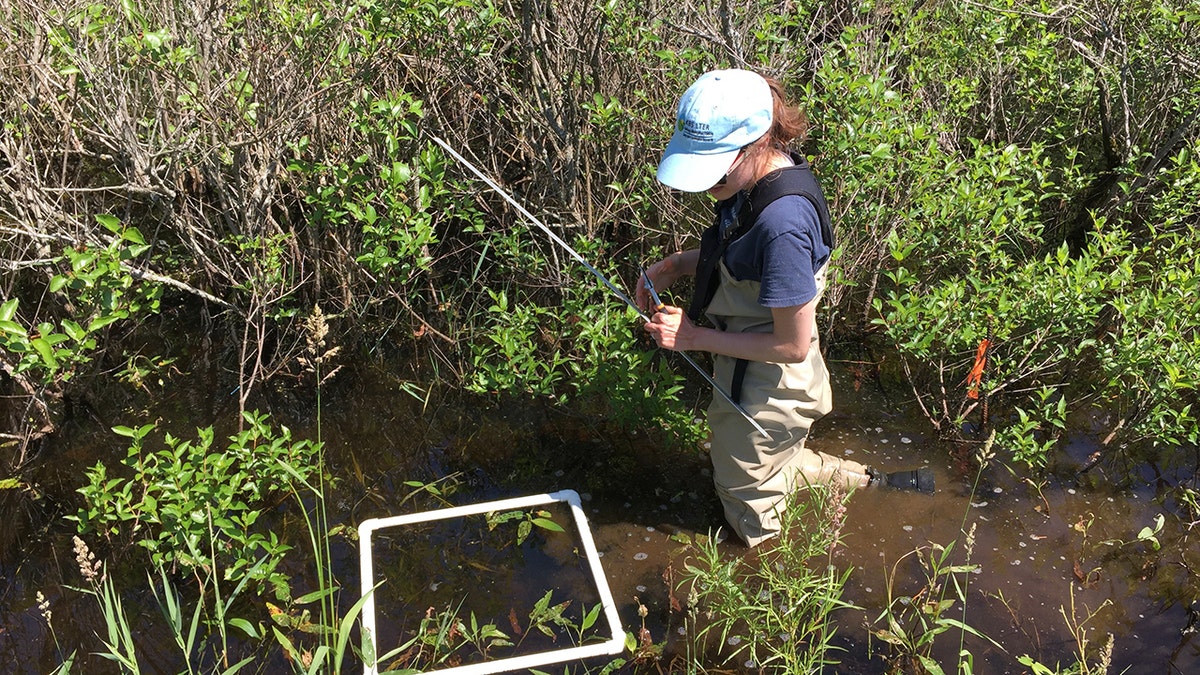New report blames rice farms for climate change
Director of the Rice Foundation Dr. Steve Linscombe discusses the staple food source for half of the world population.
Biologists at Michigan State University (MSU) have been studying damselflies — which resemble dragonflies and are abundant as both predator and prey in wetlands — in order to understand what happens throughout their lifecycle from nymph to winged insect, along with what they eat, when summers grow warmer and longer, according to MSU Today.
Now, a new study from MSU suggests bugs will thrive in an ever-warming world.
Researchers discovered that damselflies were birthing an extra set of larvae each year to keep up with rapid changes of the world’s weather, according to SWNS, a British news agency, which also reported on the study.
ODD BUGS: FASCINATING FACTS ABOUT PRAYING MANTISES, WALKING STICKS AND OTHER UNIQUE-LOOK INSECTS
The lifecycles of the bugs from Michigan were shown to mirror those of their southern relatives living in warmer climates — and this was successfully keeping them alive, the same source reported.
This contradicts many scientific models that suggested global warming would doom predator-prey species such as the damselfly.

Damselflies — which resemble dragonflies (one is shown above) — are abundant as both predator and prey in wetlands. (AP Photo/The Greeley Tribune, Jim Rydbom)
The MSU team felt that current predictions of the impact of climate change on animals were unrealistic — and that those predictions didn’t factor in how critters might behave differently in various temperatures.
Other models only simulated what would happen if damselflies lived a one-year lifecycle in a warmer world — concluding they would burn out, die, and potentially become extinct.
The bugs could actually thrive if they birthed an extra generation each season.
MSU’s team found the bugs could actually thrive if they birthed an extra generation each season.
The study's co-author Phoebe Zarnetske, an associate professor of integrative biology at MSU, said in a media statement, "We are seeing the pace of climate change is much more rapid than organisms have endured in their evolutionary experience."
GOOD LUCK OMENS! WHY THE PRAYING MANTIS, BUTTERFLY AND LADYBUG ARE THOUGHT TO BRING GOOD THINGS
She also said, "That rapid pace is going to be even more of an issue with the increase in extreme events like heat waves."
To build the new model, a mathematician worked on observational and experimental work in the field and laboratory to build a more robust model simulating the future for predators and prey, SWNS reported of the study.

Damselflies are iconic species whose lifecycles reflect changes to a warming world. Researchers from MSU discovered damselflies were birthing an extra set of larvae each year to keep up with changes in the world’s weather. (SWNS)
By studying how temperature changes affect insects in the field, the team said it believes their predictions are much more realistic.
The research began when Dr. Laura Twardochleb, a pupil of Professor Zarnetske, spent a year watching damselflies' complex lives, SWNS said.
ON THIS DAY IN HISTORY, APRIL 22, 1970, FIRST EARTH DAY, IS CELEBRATED: ‘RARE POLITICAL ALIGNMENT’
The insects emerge as adults from ponds in the spring — then mate and reproduce. The juveniles spend over a year in a pond growing by eating zooplankton.
Dr. Twardochleb saw that early models projecting how warming climates would affect predators such as the damselfly were far simpler than the nature she was observing.
They didn’t allow for the north’s changing seasons.

Michigan State University (MSU) PhD graduate Laura Twardochleb is shown investigating the effects of warming on freshwater biodiversity. (SWNS)
They also did not keep track of a predator’s size, growth or how their lifestyle changed with the hotter weather, SWNS noted.
Professor Chris Klausmeier, a mathematician and theoretical ecologist at MSU, incorporated Dr. Twardochleb’s observations with his own theory.
The team laid the groundwork for future investigations into how various species will adapt to a warmer world, said Dr. Twardochleb.
He said, "I can make up any model I want unconstrained by reality. But that’s a little dangerous because of course you want something related to the real world," according to SWNS reporting.
CLICK HERE TO SIGN UP FOR OUR LIFESTYLE NEWSLETTER
"When you join with an experimentalist, you can bring not just the experimental results and parameters, but also bring the deep natural history and knowledge to the system to know the key variables and constraints."
CLICK HERE TO GET THE FOX NEWS APP
Dr. Twardochleb wrote in Proceedings of the Royal Society B Biological Sciences, a research journal, that the team had laid the groundwork for future investigations into how various species will adapt to a warmer world, particularly disease-carrying mosquitoes.
She added, as SWNS also reported, "A lot of models said predators were going to starve. That’s what’s exciting — that we can make models more realistic."





















